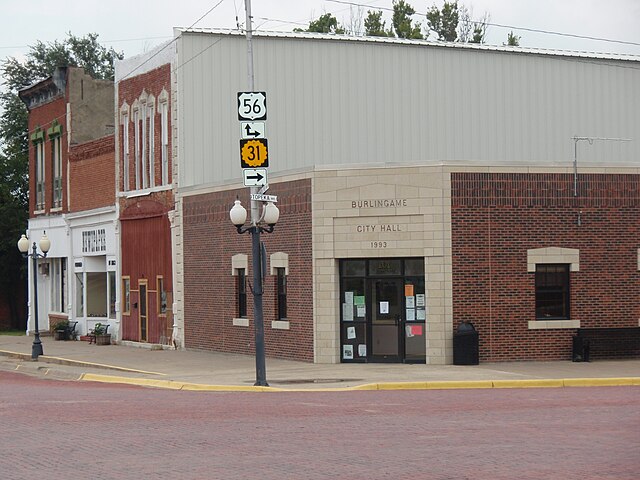A food desert is an area that has limited access to food that is plentiful, affordable, or nutritious. In contrast, an area with greater access to supermarkets and vegetable shops with fresh foods may be called a food oasis. The designation considers the type and the quality of food available to the population, in addition to the accessibility of the food through the size and the proximity of the food stores.
Many small rural towns such as Burlingame, Kansas (pictured) have no grocery stores. In Burlingame's case, the grocery store is substituted with a Dollar General store, which generally lacks essential groceries. The nearest grocery store from Burlingame, a Dillons Supermarket, is approximately 20.4 miles away near Topeka, Kansas.
A convenience store in Boston. Most of the food visible is relatively imperishable: dried, processed, and tinned products, which may have a lower vitamin and nutritional content than fresher produce. [citation needed]
Hurricane Ian caused some damage to the ceiling of a Walmart store
Flooded cars as a result of Hurricane Harvey
Transport divide refers to unequal access to transportation. It can result in the social exclusion of disadvantaged groups.
Rosa Parks being fingerprinted by Deputy Sheriff D.H. Lackey after being arrested on February 22, 1956, which started the Montgomery bus boycott
Saab 900 turned in for CFC credit.






